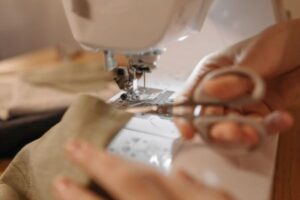
In Australia,by laser is becoming more popular in recent years. It requires only a tiny incision on the boy’s penis, and the procedure is much less invasive than traditional methods. However, there are some complications after the procedure such as increased bleeding. Before undergoing surgery, it is a good idea to speak to your doctor. It is important to fully understand the risks involved. These include infection, prolonged hospital stays, and a reduced cosmetic appearance. Different surgical techniques may involve different complications and results.

Since the 1970s, the CO2 laser has been in use. This method is an alternative to electrocautery, and other methods of circumcision. Although the procedure is painful, it is usually painless and only takes a few hours. If they don’t wish to risk transmission, they can get help from a male partner who has been vaccinated for genital herpes. Although the postoperative complication rate was similar between the two groups, the Nd-YAG laser had fewer early and late complications. The procedure was quicker and more efficient, reducing the risk for granulation tissue formation and sinus tract formation. The NdYAG laser’s antimicrobial capabilities were beneficial during the recovery period. They also significantly improved cosmetic results. The entire procedure took only one hour.
Patients were able spend more time with their partners following the procedure, which helped reduce the risk of infection. There are many benefits to circumcision by laser. The cost of the procedure will be lower than traditional surgery, and there will be fewer complications for the patient after the procedure. The procedure is also more convenient. After the surgery, the patient will experience less bleeding. The bandage will be changed based on the doctor’s instructions. There are a few things to remember after the procedure. It is essential to take care of your hygiene after the operation so you don’t get any complications or infection.
While the procedure costs are still affordable, the risks and complications are minimal. The procedure is also relatively safe. The laser is more effective that traditional methods. It is an effective alternative to traditional circumcision, despite the risks. To evaluate the skin’s reaction to the procedure, a perioperative photo is taken after the circumcision. The procedure will also allow the surgeon to determine the best location for the scar. Scarring and infection are rare complications after this surgery.
The CO2 laser is a popular choice for circumcision. It can also be used to circumcise adult males. It can also be used to reduce postoperative morbidity and for noninvasive procedures. The CO2 Laser can be used to reduce the time needed for surgery. It is more painless than traditional methods and requires less surgical skill. The laser is safe and effective for a variety of circumcision procedures.
A low energy laser is used for cutting penile skin. Postoperative infections are possible with the CO2 Laser, even though it has a high hemostasis. People with excess penile fat may choose to have their CO2 laser circumcision performed. These cases present minimal risk of anaesthesia or suture removal and hematoma formation. The laser is more susceptible to infection and hematoma that cyanoacrylate. It can be used on both children and adults. The high intensity laser does no damage to other tissues. Anesthesia is not required for a lower-cost version. A laser is an excellent option for this procedure, which has many advantages.
Circumcision has become a routine Sydney Circumcision procedure in many countries. It is used for religious and cultural reasons. It is important that you consider the risks associated with laser circumcision. There are risks associated to the procedure, but they are not as severe as most patients think. In contrast, it does not require any bleeding. To reduce swelling, the patient should take pain medication following the procedure. After the procedure, a tissue adhesive can be used to close the lacerations. A sterile wound is less likely to require stitches, reducing the risk of infection.

